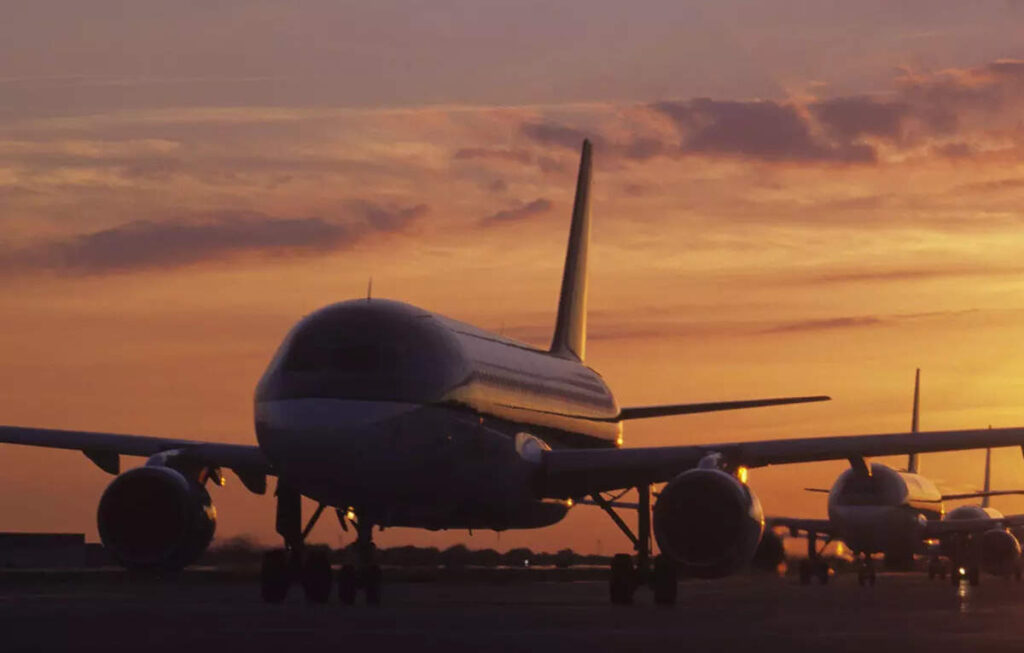The Indian aviation industry is expected to experience a more favorable financial trajectory in the coming years, according to the latest report by rating agency ICRA. Despite lingering challenges, the industry is forecast to maintain its losses within a range of INR 20-30 billion for FY2025 and FY2026, down from earlier estimates of INR 30-40 billion.
ICRA has adjusted its growth forecast for domestic air passenger traffic in FY2025, lowering it to a 7-10 per cent year-on-year (YoY) increase due to the high base of FY2024 and disruptions from extreme weather conditions in Q1 FY2025. This revised outlook translates to expected domestic passenger traffic of 164-170 million in FY2025. However, the international segment is expected to see healthier growth, with air passenger traffic for Indian carriers projected to expand by 15-20 per cent.
Improved Industry Conditions Despite Pressures
The aviation sector has demonstrated strong pricing discipline, reflected in the increased spread between revenue per available seat kilometer (RASK) and cost per available seat kilometer (CASK). This improved pricing power has led ICRA to maintain a stable outlook for the industry, with continued growth in both domestic and international passenger volumes and a relatively stable cost environment.
Suprio Banerjee, Vice President & Sector Head – Corporate Ratings at ICRA, commented: “While the industry is expected to report net losses of INR 20-30 billion in FY2025 and FY2026, this is a marked improvement from earlier projections due to better pricing practices and a stable cost structure. However, pressures on yields remain, as airlines strive to maintain adequate passenger load factors (PLFs) amid rising aviation turbine fuel (ATF) prices.”
ICRA’s analysis highlights that ATF prices, which have historically accounted for 30-40 per cent of airlines’ operating expenses, have seen a YoY increase of 4 per cent in the first five months of FY2025. The average ATF price for the period stood at INR 99,468 per kiloliter, up from INR 95,906 per kiloliter in FY2024.
Supply Chain Woes and Grounded Aircraft
Despite a 10 per cent capacity addition in FY2024, the number of operational aircraft in India dropped to 664 by March 2024 due to supply chain challenges and engine failure issues. This represents a significant reduction from the 725 aircraft in operation as of March 2023. As of June 2024, approximately 134 aircraft, or 15-17 per cent of the total fleet, remained grounded, further straining the industry’s capacity.
The report also points to supply chain disruptions affecting the availability of aircraft engines and parts, delaying deliveries and curbing the industry’s ability to ramp up capacity. This has led to increased operational expenses, including higher lease rentals for older, less fuel-efficient aircraft that are being used to compensate for grounded planes.
Banerjee added, “The current supply chain challenges, coupled with the availability of pilots and cabin crew for select airlines, are likely to result in continued capacity constraints and higher operating costs in the near term.”
Capacity Expansion Outlook
While the industry has seen large aircraft purchase orders, with a total of 1,660 pending aircraft deliveries, the pace of capacity expansion is expected to remain gradual due to ongoing global supply chain challenges. A significant portion of these orders are intended to replace older aircraft with new, fuel-efficient models.
ICRA expects the debt metrics of the aviation industry to remain within improved levels seen in FY2024. The total debt-to-operating profit before depreciation, interest, taxes, and amortization (OPBDITA) ratio is forecast to stay in the 6-6.5x range, with interest coverage at 2-2.5x.
Though the Indian aviation industry continues to face challenges, particularly with regard to rising fuel costs and supply chain disruptions, ICRA’s latest report indicates that the sector is navigating towards clearer skies. Improved pricing discipline, a gradual recovery in international traffic, and a relatively stable cost environment are expected to help airlines keep losses within a manageable range in the coming years. However, supply chain challenges and capacity constraints may continue to affect the sector’s recovery trajectory in the near term.
